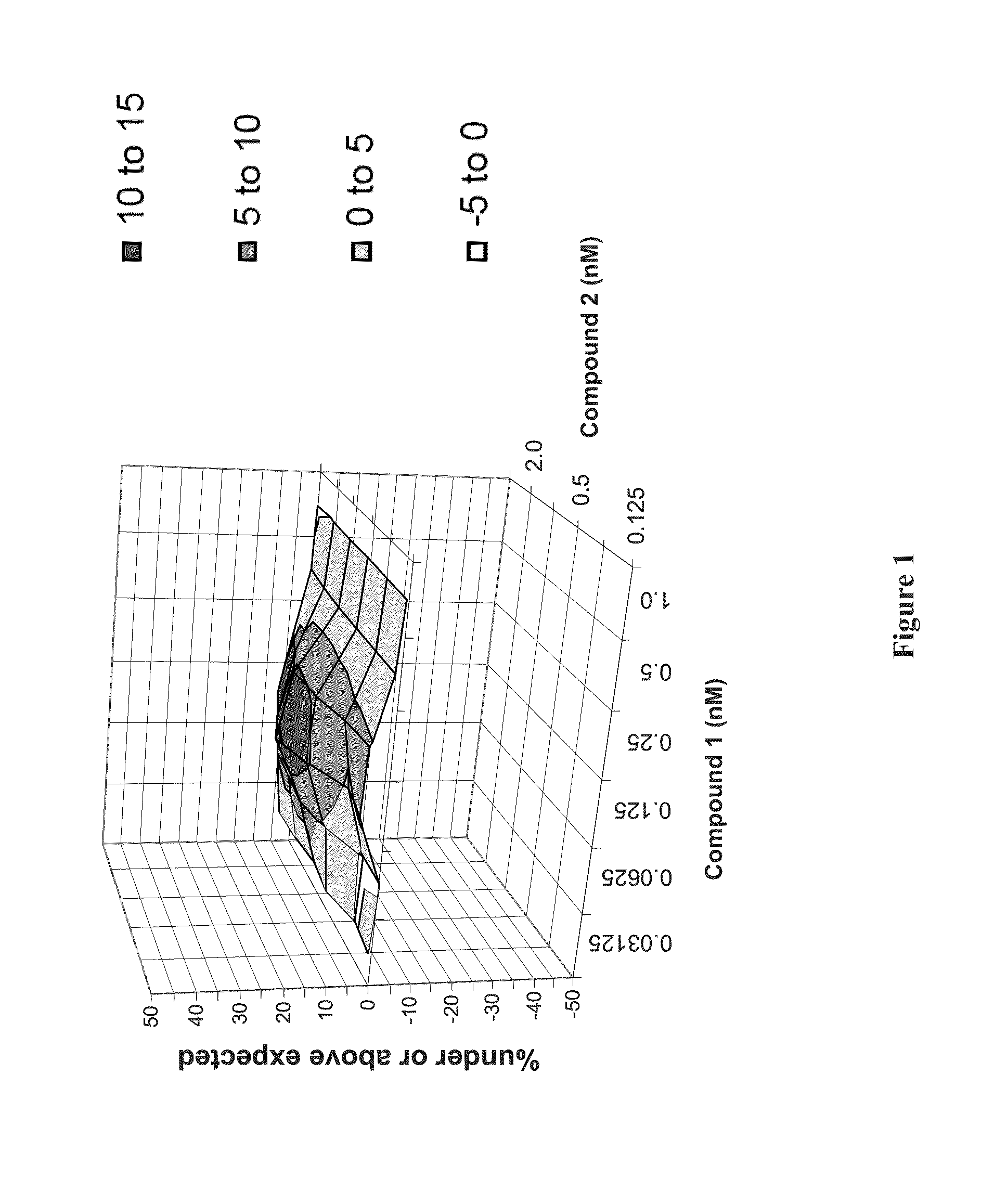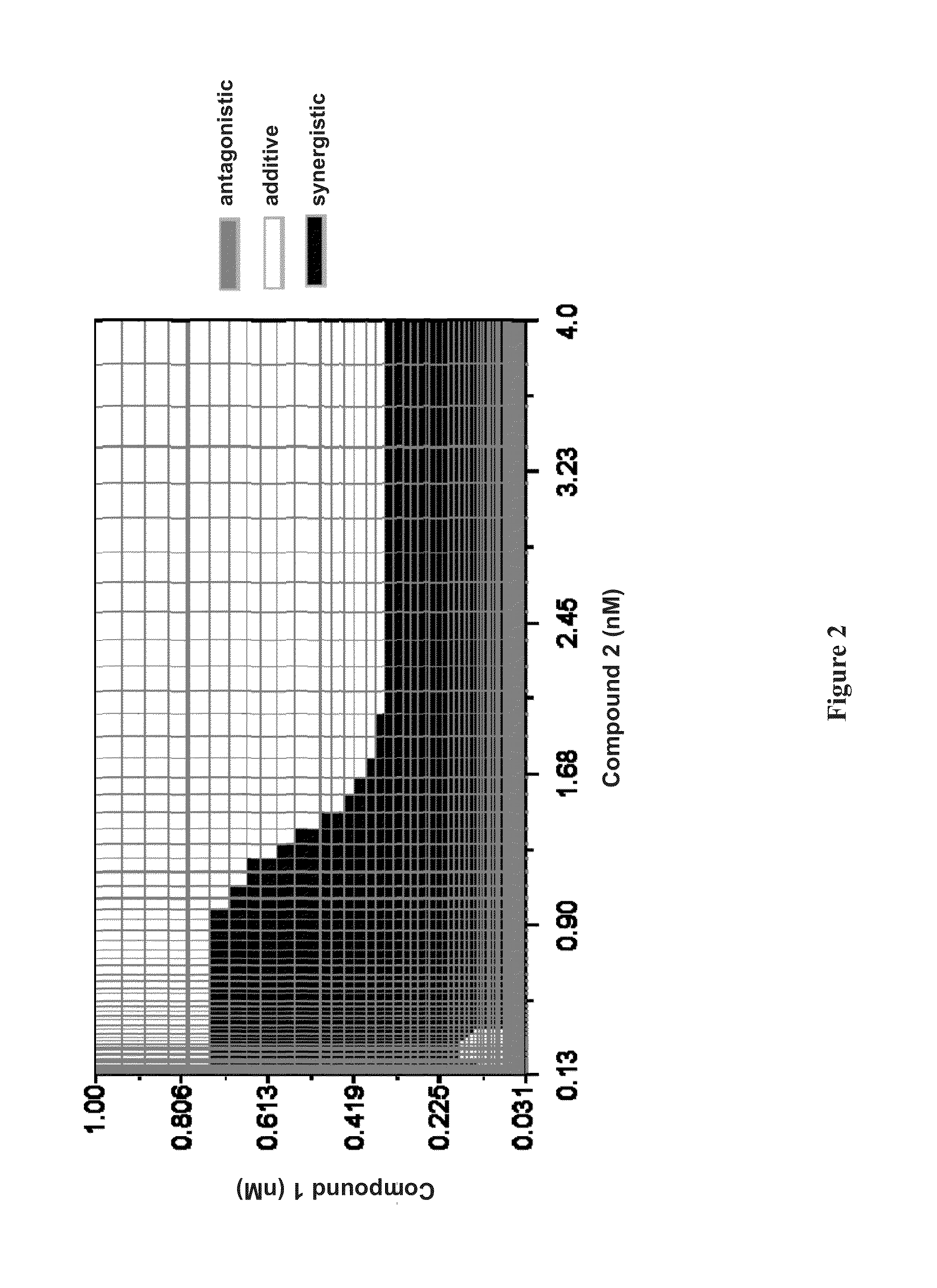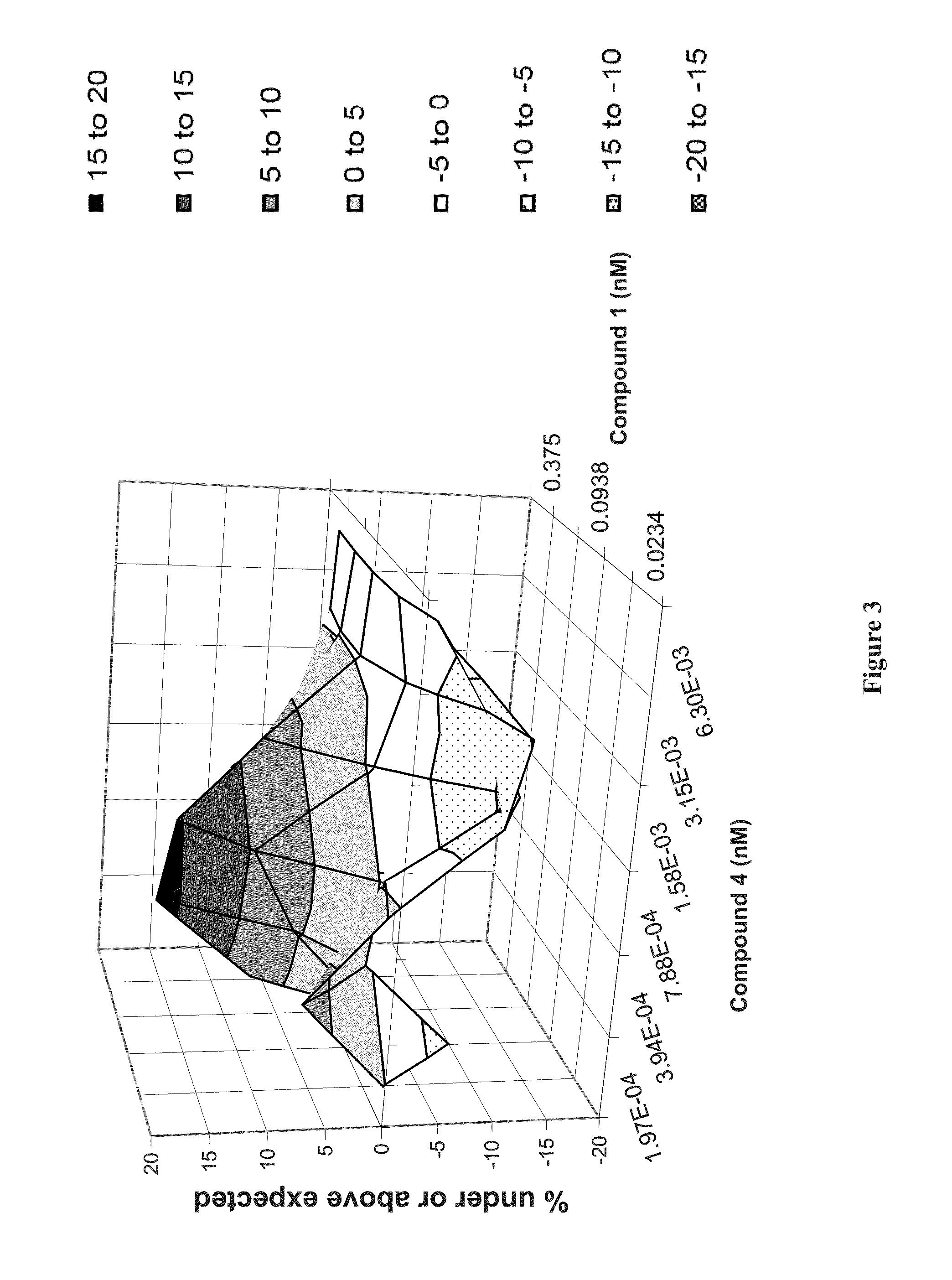Methods for Treating HCV
a technology of hepatitis c virus and interferon, which is applied in the direction of biocide, drug composition, peptide/protein ingredients, etc., can solve the problems of insufficient viral elimination from the body, substantial limitations in efficacy and tolerability, etc., and achieve the effect of improving the pharmacokinetics or bioavailability of one, and avoiding the side effects associated
- Summary
- Abstract
- Description
- Claims
- Application Information
AI Technical Summary
Benefits of technology
Problems solved by technology
Method used
Image
Examples
example 1
Use of 2-DAA Combination with Ribavirin (RBV) to Treat Treatment-Naïve Subjects Infected with HCV Genotype 1
[0197]Previously untreated subjects having HCV infection were treated with a protease inhibitor (in combination with ritonavir), a polymerase inhibitor, and ribavirin. The treatment was without interferon.
[0198]Subjects included 11 treatment naïve, non-cirrhotic HCV genotype 1-infected subjects between the ages of 18 and 65. All subjected had IL28B CC genotype. All subjects completed 12 weeks of therapy with Compound 1 and ritonavir (Compound 1 / r) dosed in combination with Compound 3 and ribavirin (RBV). Compound 1 (150 mg once daily (QD)) was dosed with 100 mg QD ritonavir, 400 mg QD Compound 3, and weight-based amounts of RBV (1,000-1,200 mg / day dosed twice daily) in treatment naïve subjects infected with genotype (GT) 1 HCV.
[0199]HCV RNA levels were measured by TaqMan assay. Five of the eleven subjects had hepatitis C ribonucleic acid (HCV RNA)<25 IU / mL (i.e., below the lim...
example 2
A Use of 2-DAA Combination with Ribavirin to Treat Treatment-Naïve or Non-Responder Subjects Infected with HCV Genotype 1
[0200]Group 1. Previously untreated subjects having HCV infection were treated with a protease inhibitor (in combination with ritonavir), a polymerase inhibitor, and ribavirin. The treatment was without interferon.
[0201]Subjects included 19 treatment naïve subjects between the ages of 18 and 65. One subject discontinued the study at week 3. All of the remaining 18 subjects completed 12 weeks of therapy with Compound 1 / r dosed in combination with Compound 2 and RBV. Compound 1 (250 mg QD) was dosed with 100 mg QD ritonavir, 400 mg BID Compound 2, and RBV in treatment naïve subjects infected with GT1 HCV.
[0202]Group 2. Previously untreated subjects having HCV infection were treated with a protease inhibitor (in combination with ritonavir), a polymerase inhibitor, and ribavirin. The treatment was without interferon.
[0203]Subjects included 14 treatment naïve subjects ...
example 2b
Use of 2-DAA Combination with Ribavirin to Treat Treatment-Naïve Subjects Infected with Genotype 1, 2 or 3
Genotype 1
[0213]Ten previously untreated subjects infected with HCV genotype 1 were treated with a 2-DAA combination with ribavirin. The treatment was interferon-free and was designed to last 12 weeks. The 2-DAA combination included Compound 1 / r (200 / 100 mg QD) and Compound 4 (25 mg QD). The weight based dosing of ribavirin ranged from 1000 to 1200 mg divided twice daily. At weeks 5, 6 and 7 of the treatment, nine of the ten subjects showed no detectable HCV RNA; and the remaining one subject had HCV RNA levels of less than 25 IU / mL. At week 8 of the treatment, five of the nine subjects were tested and showed no detectable HCV RNA. At weeks 9 and 10 of the treatment, four of the five subjects were further tested and found no detectable HCV RNA. At week 11, two of the four subjects were tested and found no detectable HCV RNA.
[0214]Additional testing showed that all of the initial...
PUM
| Property | Measurement | Unit |
|---|---|---|
| weight | aaaaa | aaaaa |
| weight | aaaaa | aaaaa |
| weight | aaaaa | aaaaa |
Abstract
Description
Claims
Application Information
 Login to View More
Login to View More - R&D
- Intellectual Property
- Life Sciences
- Materials
- Tech Scout
- Unparalleled Data Quality
- Higher Quality Content
- 60% Fewer Hallucinations
Browse by: Latest US Patents, China's latest patents, Technical Efficacy Thesaurus, Application Domain, Technology Topic, Popular Technical Reports.
© 2025 PatSnap. All rights reserved.Legal|Privacy policy|Modern Slavery Act Transparency Statement|Sitemap|About US| Contact US: help@patsnap.com



